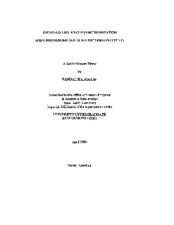| dc.description.abstract | Cotton is an economically important crop in the U.S., but is relatively poorly characterized genetically. Unlike other, more researched crops, it is lacking highly effective methods for consistent cell cycle manipulation and chromosome doubling. Control over these biological features will enhance the ability to produce high quality cytological preparations of chromosomes and to double the number of chromosomes, i.e., induce polyploidy. The ability to routinely produce large numbers of high quality chromosome preparations from plants facilitates genomic characterization, while chromosome doubling allows integration of desirable genetic diversity from closely related plant species. This research establishes a procedure for cell cycle synchronization of root tips using hydroxyurea, and analyzes the efficacy of known chemicals for metaphase accumulation. Possibilities for adapting the procedure for improved chromosome doubling in shoot apical meristems are also introduced. Experimental evaluations were made by hydroponically treating seedlings with four antitubulin compounds of diverse chemistry - colchicine, amiprophos-methyl (APM), a benzamide designated RH-4032, and a novel phenylcyclohexene colchicine mimic (2d), followed by visual analysis of root tip morphology and cytological determination of the mitotic index, or fraction of cells at metaphase. An 18-hour treatment of 3-5 mM hydroxyurea gave optimum synchronization. Three of the antitubulin compounds, amiprophos-methyl, 2d, and RH-4032, outperformed colchicine, the standard agent for metaphase accumulation, and yielded average mitotic indices of 0.3. Peak mitotic indices exceeding 0.7 were observed for 2d and APM. Shoot bud topical application of APM, 2d, and RH-4032 produced short term changes ranging from sectored and misshapen leaves to meristem necrosis, followed by development of thicker and darker leaves. Cytological data and visual observations suggest these compounds cause somatic doubling of the chromosome number in cotton, and that one or more of them will provide a favorable alternative to the traditional methods based on colchicine, which is highly toxic and mutagenic to humans. | en |


